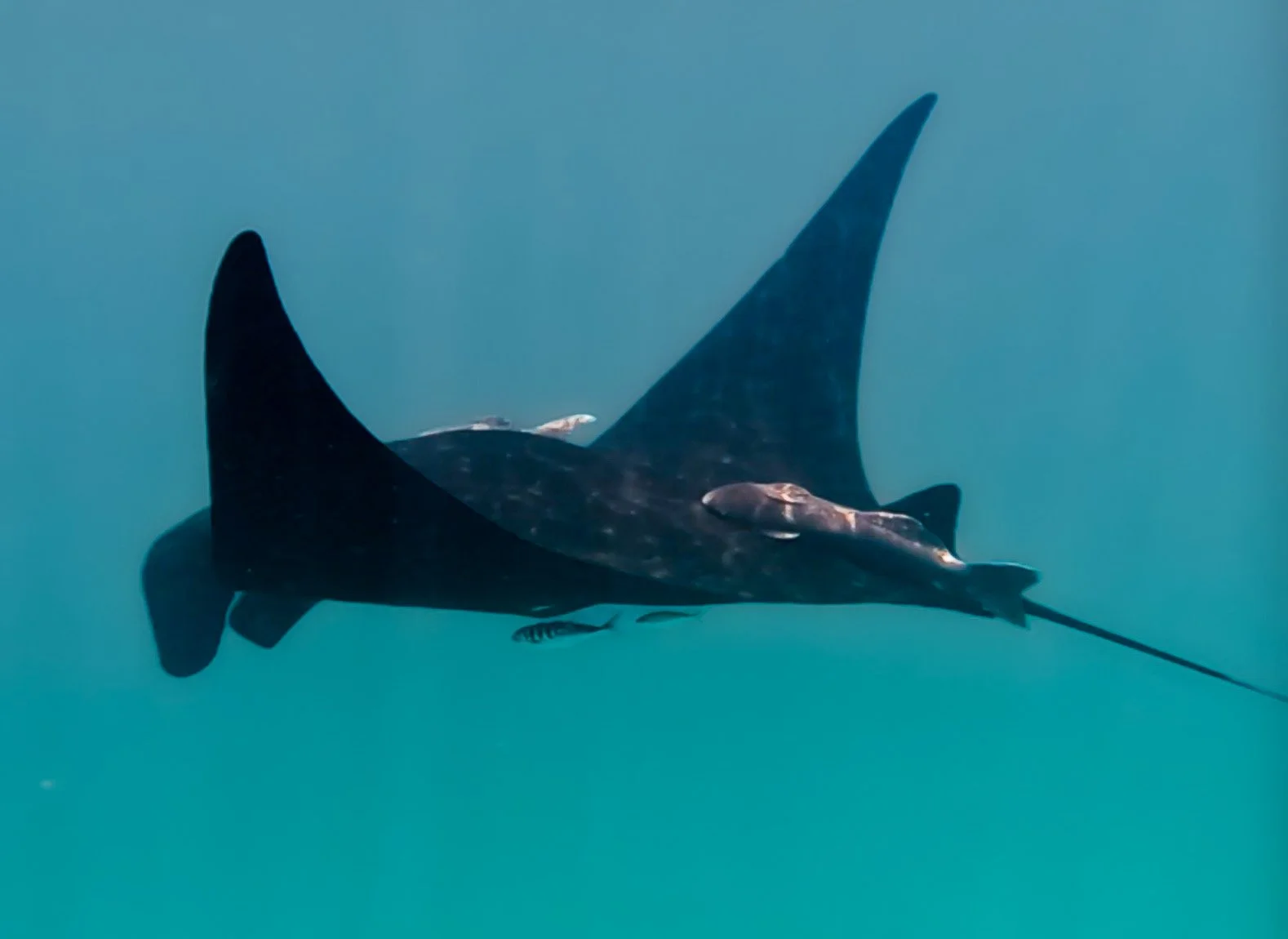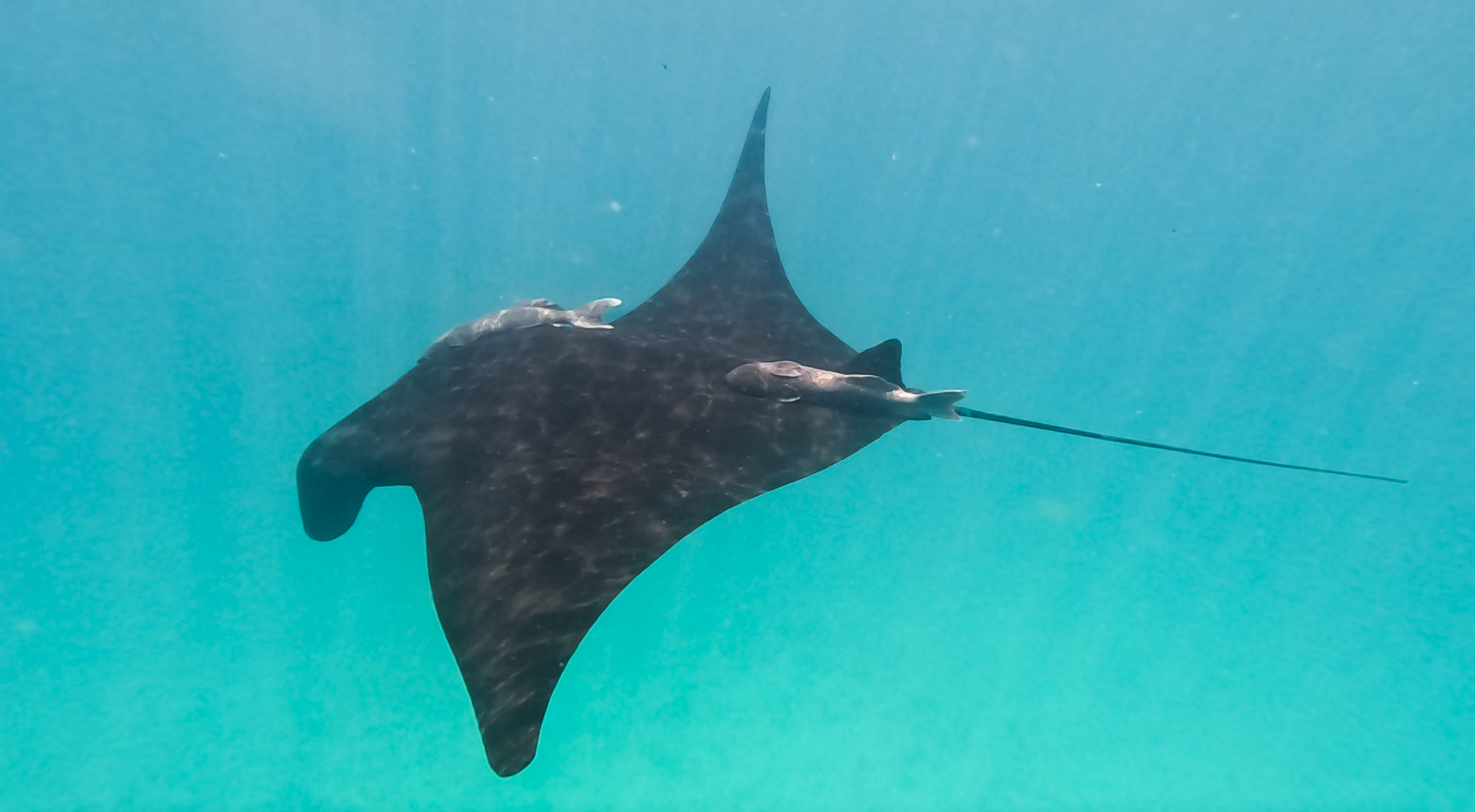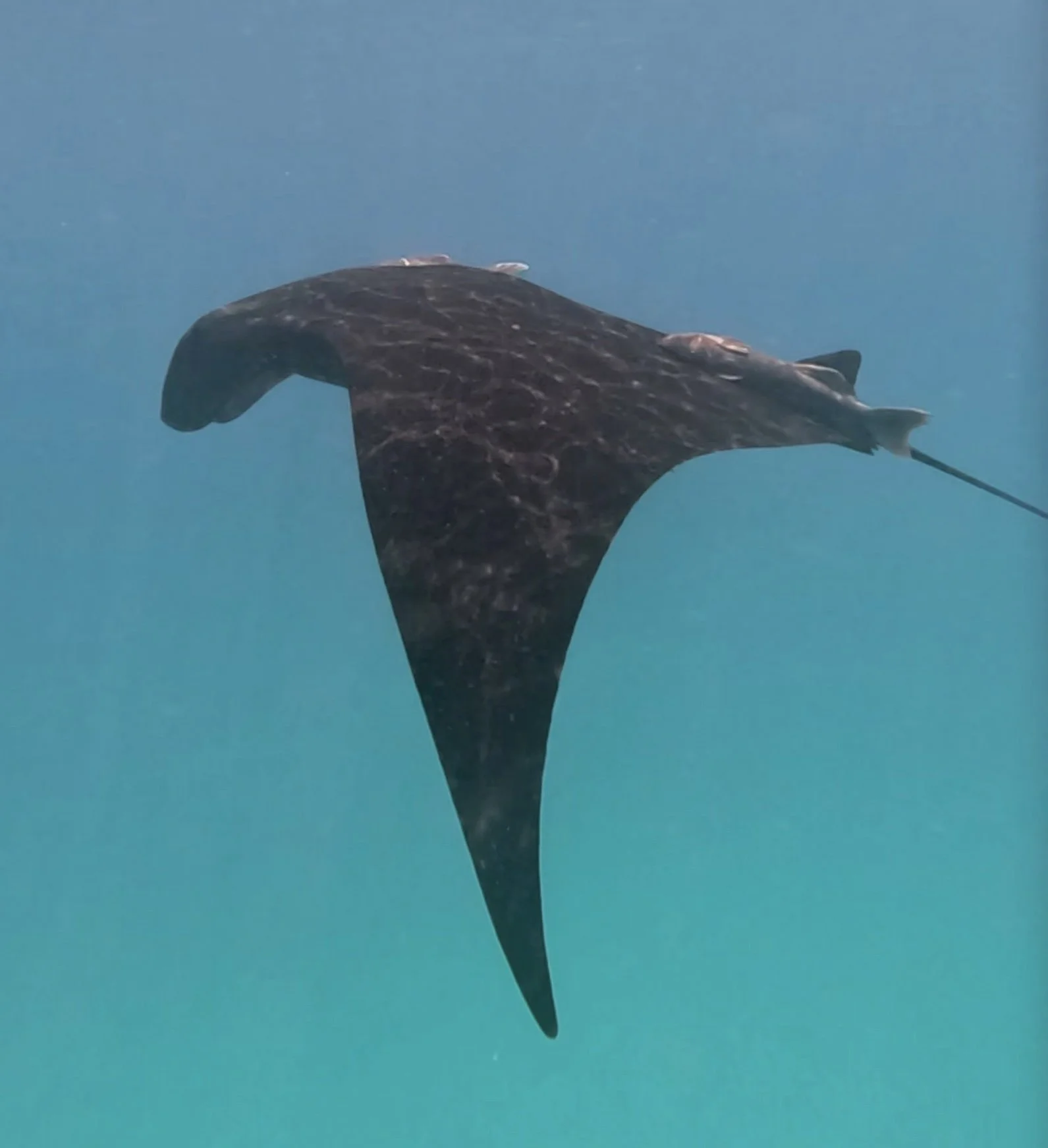A rare encounter in Loreto: Juvenile Mobula birostris with melanistic morph spotted by Baja Adventures
Juvenile Mobula birostris with Melanistic Morph Spotted in Loreto by Baja Adventures
At Baja Adventures, every day on the water brings the promise of extraordinary wildlife encounters, but recently we experienced something truly exceptional—a juvenile Mobula birostris exhibiting the rare melanistic morph in the pristine waters of Loreto, Baja California Sur.
What makes this sighting so special?
Mobula birostris, commonly known as the giant manta ray, is already an awe-inspiring species, reaching widths of up to 7 meters and gracefully gliding through the ocean with their enormous, wing-like pectoral fins. What made this encounter unique was the individual’s melanistic coloration—a striking, almost entirely black body covering both its dorsal (upper) and ventral (under) surfaces, with only minimal lighter patches near the gills.
This dark “black manta” morph is much less common than the typical “chevron” morph, which features distinctive pale V-shaped markings on the back and a mostly white belly. The melanistic morph is a fascinating example of colour polymorphism, where different colour variants naturally occur within the same species. Scientific studies show that these colour differences are genetically based and do not affect the manta’s survival or behavior, but they do add to the visual diversity and wonder of these ocean giants.
Why Loreto and the Gulf of California are important
Loreto, located in the Gulf of California, is a marine sanctuary renowned for its pristine, protected waters and rich biodiversity. The region provides critical habitat for many marine species, including several mobula ray species. Juvenile mantas, like the one we spotted, often use these warm, productive waters as nursery grounds, where abundant plankton supports their growth and development.
Juvenile mobula birostris with Melanistic Morph Spotted in Loreto by Baja Adventures
The Gulf of California’s unique oceanography, combining nutrient-rich upwellings with clear, calm seas, creates ideal conditions for plankton blooms, attracting filter feeders like manta rays and their relatives. This environment, coupled with Loreto’s small, welcoming community and absence of mass tourism, makes it a special place for both wildlife and those lucky enough to witness it.
Conservation and awareness
Giant manta rays are classified as Endangered by the IUCN, facing threats from fishing, habitat disturbance, and climate change. Sightings of rare melanistic juveniles highlight the importance of protecting these vulnerable populations and their habitats.
At Baja Adventures, we are committed not only to sharing these magical moments with our participants but also to promoting responsible tourism and conservation awareness. By respecting these animals and their environment, we help ensure that future generations can marvel at the beauty and mystery of Mobula birostris—in all their colour variations.
Juvenile Mobula birostris with Melanistic Morph Spotted in Loreto by Baja Adventures
Witnessing a melanistic juvenile giant manta in Loreto was a reminder of the ocean’s endless wonders and the vital role we all play in protecting them.
Join us at Baja Adventures to experience these incredible creatures firsthand and support their conservation on a regenerative tourism expedition.



